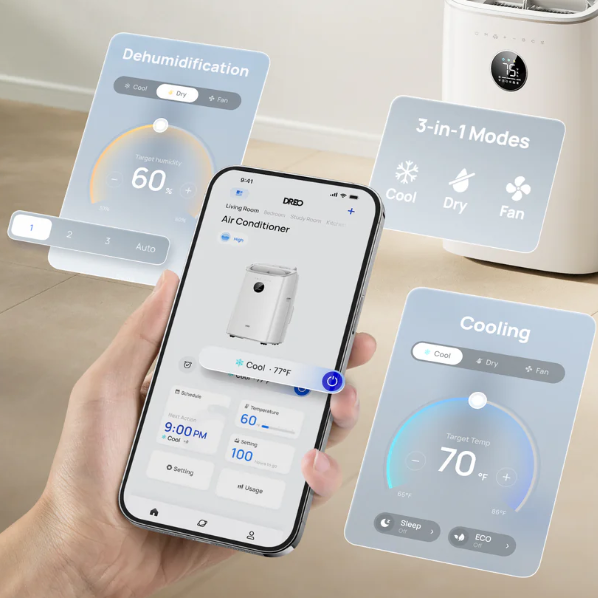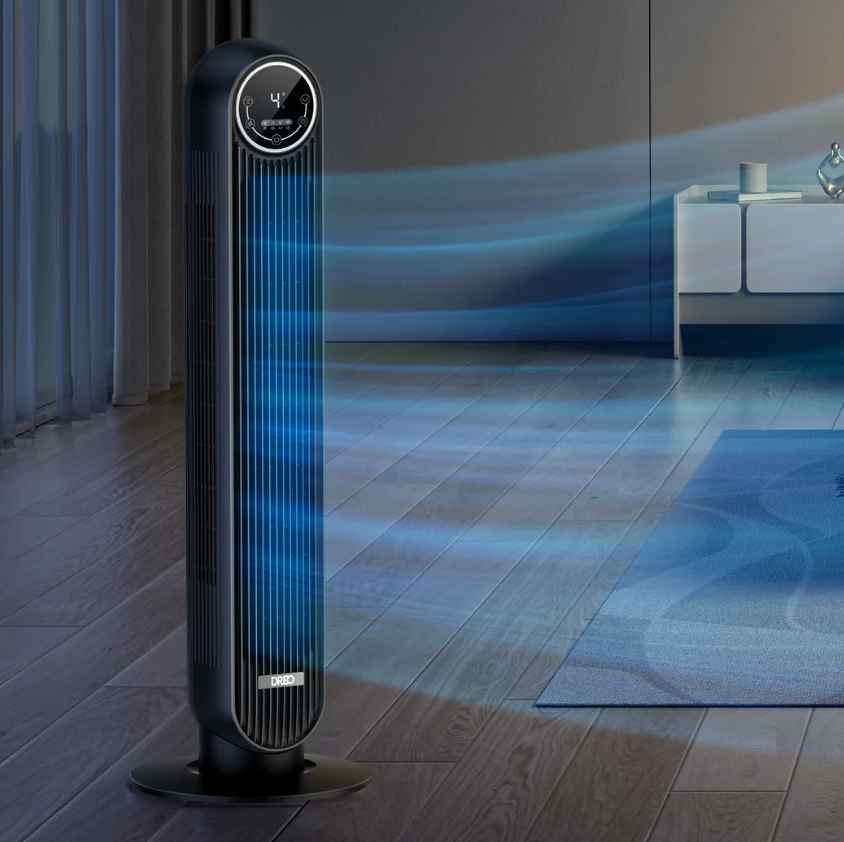On a hot day, nothing beats a cool breeze — especially one that keeps you comfortable without spiking your electricity bill. But if you're using a tower fan, you might be curious about how much energy it’s really consuming. In this post, we’ll break down what affects a tower fan's energy use and share tips for maximizing efficiency. No fluff — just straightforward info to keep you cool without the high costs.
How Much Electricity Do Tower Fans Actually Use?
Unlike air conditioners, which actively cool the air using refrigerants and compressors, tower fans simply move air around. This makes a huge difference in energy consumption.
A typical tower fan uses anywhere from 30 to 100 watts — a fraction of what an AC unit requires. To put this into perspective:
- A central air conditioner: 2,000–5,000 watts
- A window AC unit: 500–1,500 watts
- A tower fan: 30–100 watts
Even if you run a tower fan all day long, it would cost just pennies. For example, if your tower fan uses 50 watts and you run it for 8 hours, it would use just 0.4 kilowatt-hours (kWh) of electricity. At an average U.S. electricity rate of 16.54 cents per kWh, that’s just about 5 cents per day.
And with advanced energy-efficient designs, some DREO tower fans can stretch those savings even further.
Factors That Affect Energy Use
Not all tower fans consume electricity the same way. A few key factors influence how much energy they use:
AC or DC Motors?
The type of motor in a fan plays a significant role in energy efficiency. DC motors use far less power than traditional AC motors. Fans with DC motors, featuring super-precision bearings and speeds up to 1428 rpm—like those in the DREO Tower Fan 519S — deliver fast, stable cooling while consuming less electricity. These motors are not only more energy-efficient but also quieter, offering smooth speed adjustments without unnecessary power drain.

Speed and Power Settings
Higher speeds mean higher power consumption, but a fan with adjustable speed settings — up to 12 levels —lets you fine-tune your comfort without overdoing it. Instead of running at full blast all day, models like the DREO Pilot Max S, boasting a powerful 25 ft/s airflow, give you full control over airflow, letting you stay cool and comfortable while slashing energy waste.

Blade Design and Airflow Efficiency
The design of a fan's blades plays a key role in how efficiently it moves air. Models like the DREO Tower Fan 519, with its 210 airfoil-shaped blades, are engineered to optimize airflow by reducing drag and turbulence. This design increases air volume by 59% while lowering turbulence noise by 40%, resulting in smoother, more powerful airflow without extra energy consumption. It ensures efficient cooling with minimal power use.
Room Size and Placement
Proper placement can significantly reduce the need for higher fan speeds. A well-positioned fan circulates air more efficiently, ensuring better cooling while consuming less energy. By directing airflow to the right areas, a comfortable environment can be maintained without wasting power, even in larger spaces.
Practical Ways to Lower Energy Use with a Tower Fan
Even the most energy-efficient fan won't perform at its best if not used properly. Here are some tips to maximize energy savings:
Use it with your AC - Positioning the fan strategically can help distribute cool air more effectively, allowing for a higher thermostat setting and lower cooling costs.
Leverage auto mode - Many fans, such as the DREO Cruiser Pro T3, feature an energy-saving auto mode that adjusts the fan's speed based on the room temperature, keeping things comfortable without wasting power.

Opt for a programmable timer - Use a fan with a programmable timer, like the DREO Nomad One, to set it to turn off after a few hours (anywhere from 1–8 hours). This prevents it from running unnecessarily throughout the day.
Use Oscillation Wisely - Fans with a 90° to 120° oscillation, like the DREO Pilot Max S, can cool an entire room more evenly, eliminating the need for multiple fans or running the fan at higher speeds.
Keep it Clean - Dust buildup can slow airflow, causing the fan to work harder and consume more energy. Models with removable rear grilles make cleaning easy and help maintain efficiency over time.
Final Takeaway
In the end, tower fans are a smart, budget-friendly way to stay cool without the high costs. With the right features and proper usage, they'll help you beat the heat while keeping your energy bill in check.
If you're looking for a hassle-free way to stay comfortable and save on energy, a DREO tower fan might be just what you need.



